Subscribe to our newsletter

Watch Video About Top 10 Historic Shrines to Visit in Kyoto
Watch Video About Top 10 Historic Shrines to Visit in Kyoto
Kyoto, the ancient capital of Japan, is home to a treasure trove of historic shrines, each with its own unique charm and story. Whether you're looking to explore Kyoto's spiritual side or simply marvel at the beauty of traditional Japanese architecture, these top 10 historic shrines should be on your must-visit list
Blog navigation
1. Fushimi Inari Taisha
Perhaps the most iconic of Kyoto's shrines, Fushimi Inari Taisha is renowned for its seemingly endless rows of vibrant red torii gates that lead visitors up Mount Inari. The shrine is dedicated to Inari, the Shinto god of rice and prosperity. As you walk through the pathways, you'll encounter smaller shrines and breathtaking views of Kyoto. Visiting at sunrise or sunset can make for a particularly magical experience, as the light casts a warm glow through the gates.
Tip: Don’t miss the opportunity to explore the trails further up the mountain for a quieter, more peaceful experience

2. Yasaka Shrine
Located in the heart of Kyoto’s Gion district, Yasaka Shrine is a popular stop for both locals and tourists. It’s best known for hosting the annual Gion Matsuri, one of Japan’s most famous festivals. The shrine itself is a blend of grandeur and tradition, with its bright vermillion pavilions and spacious grounds. Its central location makes it a great starting point to explore the surrounding Gion area, known for its traditional teahouses and geisha culture.
Tip: Visit during Gion Matsuri in July for an unforgettable festival atmosphere
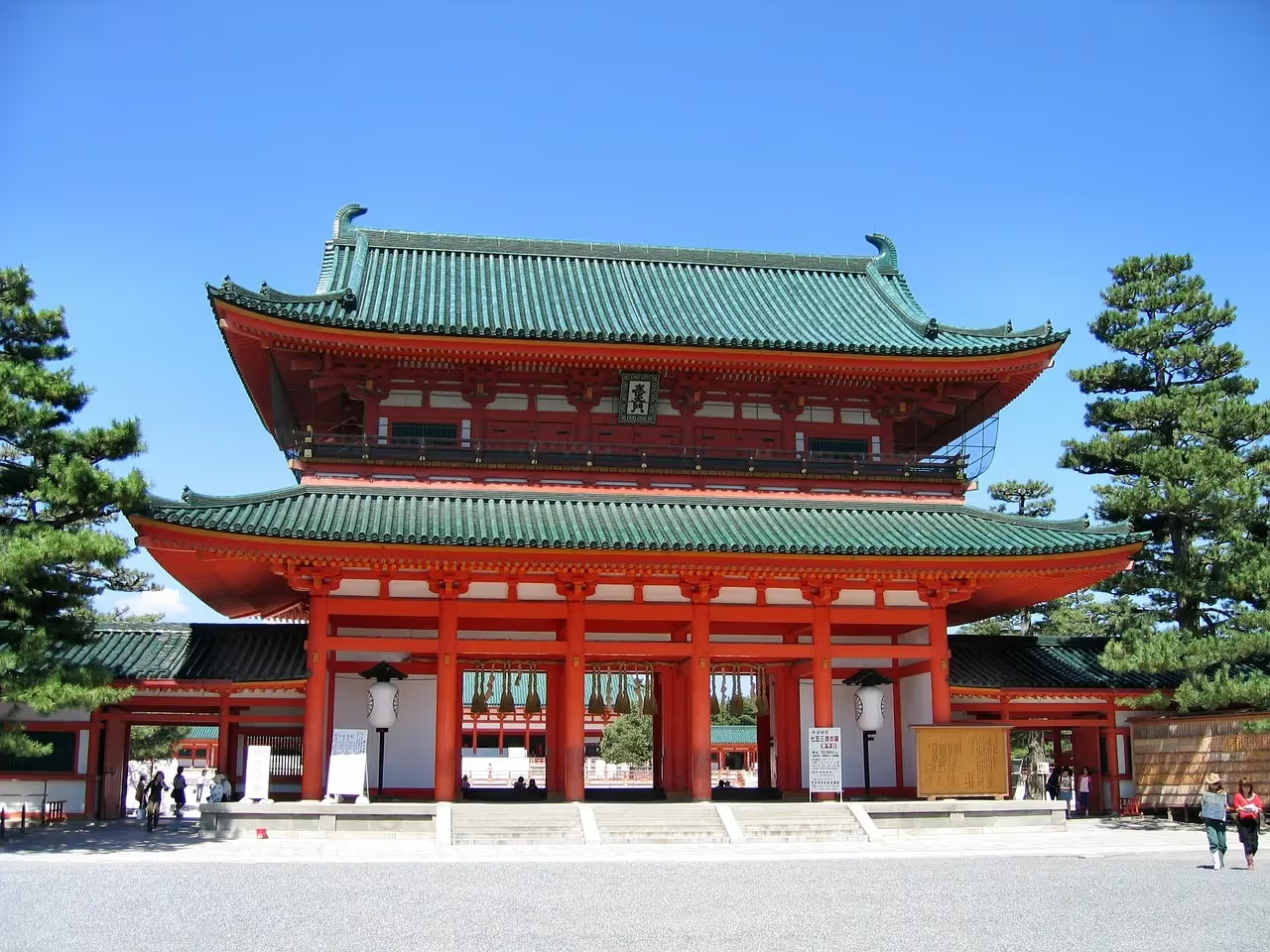
3. Heian Shrine
Heian Shrine is a relatively new addition compared to Kyoto’s other historic shrines, but it’s no less impressive. Built in 1895 to celebrate the 1100th anniversary of Kyoto's founding, the shrine is known for its massive torii gate that towers over the entrance and its expansive gardens that are perfect for a peaceful stroll. The main buildings are a stunning representation of traditional Japanese architecture, painted in vibrant red and white.
Tip: The shrine’s gardens are especially beautiful in spring when the cherry blossoms are in full bloom
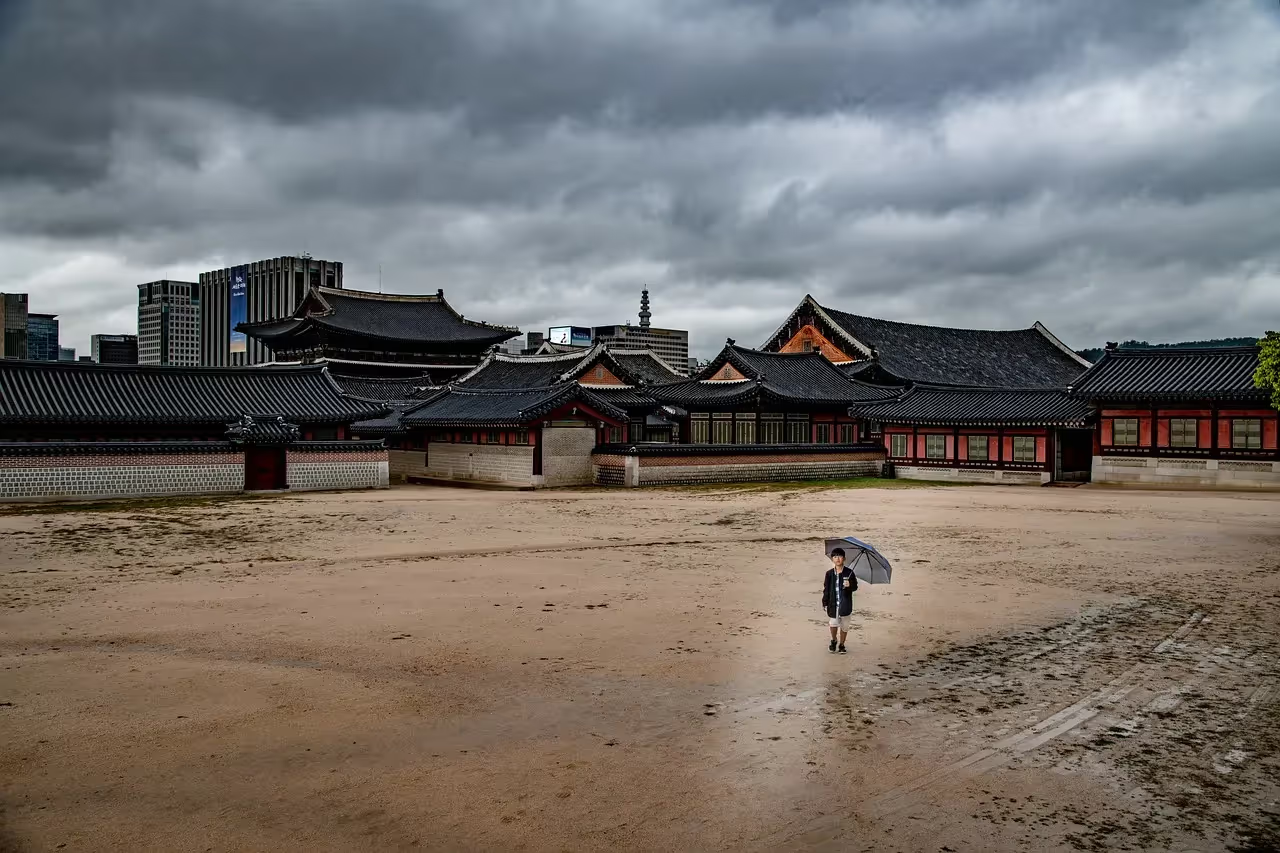
4. Shimogamo Shrine
Dating back over 2,000 years, Shimogamo Shrine is one of Kyoto’s oldest shrines and a UNESCO World Heritage site. It’s nestled within the Tadasu no Mori, a sacred forest believed to purify visitors as they approach the shrine. The peaceful surroundings and ancient trees make it a perfect retreat from the hustle and bustle of the city. Shimogamo Shrine is also associated with the Aoi Matsuri, another of Kyoto’s grand annual festivals.
Tip: Take a walk through Tadasu no Mori to enjoy the serene atmosphere and admire the ancient trees
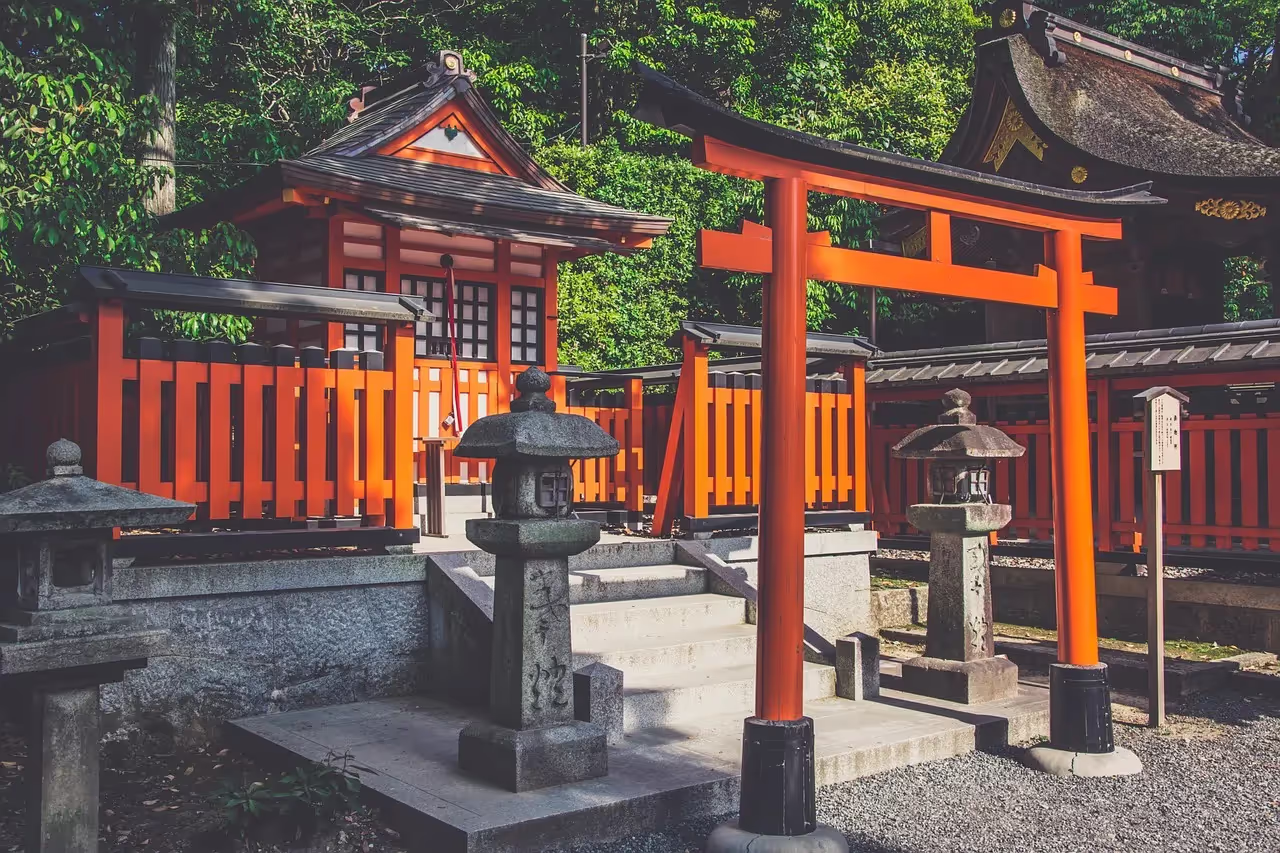
5. Kamigamo Shrine
Another UNESCO World Heritage site, Kamigamo Shrine is one of Kyoto’s oldest and most significant shrines. It shares a close connection with Shimogamo Shrine and is also linked to the Aoi Matsuri. Kamigamo’s architecture is simple yet elegant, blending beautifully with its natural surroundings. The shrine’s grounds are spacious, allowing visitors to enjoy peaceful walks while appreciating the historical significance of the site.
Tip: Visit during early morning hours for a quiet, meditative experience

6. Kitano Tenmangu Shrine
Kitano Tenmangu Shrine is dedicated to Sugawara no Michizane, the god of education and learning, making it a popular destination for students seeking academic success. The shrine is especially famous for its stunning plum blossoms in late winter and early spring, drawing visitors to admire the beauty of the flowers alongside the historical structures. The vast grounds and historical buildings make it a tranquil escape.
Tip: Visit during the Tenjin-san flea market, held on the 25th of every month, for a unique local shopping experience

7. Kifune Shrine
Located north of Kyoto in the scenic Kibune village, Kifune Shrine is dedicated to the god of water and rain. The shrine is known for its beautiful lantern-lined stone steps leading up to the main building. Its serene setting in the mountains makes it a peaceful retreat, particularly during autumn when the surrounding foliage bursts into brilliant colors. The shrine is also famous for its "water fortunes," where fortunes are revealed by placing a special piece of paper in water.
Tip: Combine your visit with a meal at one of the nearby restaurants that serve traditional cuisine on platforms built over the Kibune River

8. Jonangu Shrine
A bit off the beaten path, Jonangu Shrine is located in southern Kyoto and is known for its exquisite gardens, particularly the "Kyokusui Garden," which features a stream used for a traditional poetry event. The shrine is dedicated to various deities related to purification, protection, and prosperity. Its serene atmosphere, especially in the lush gardens, makes it a peaceful stop for those looking to escape the more tourist-heavy areas of the city.
Tip: Visit during the plum and camellia bloom seasons to see the gardens at their most vibrant
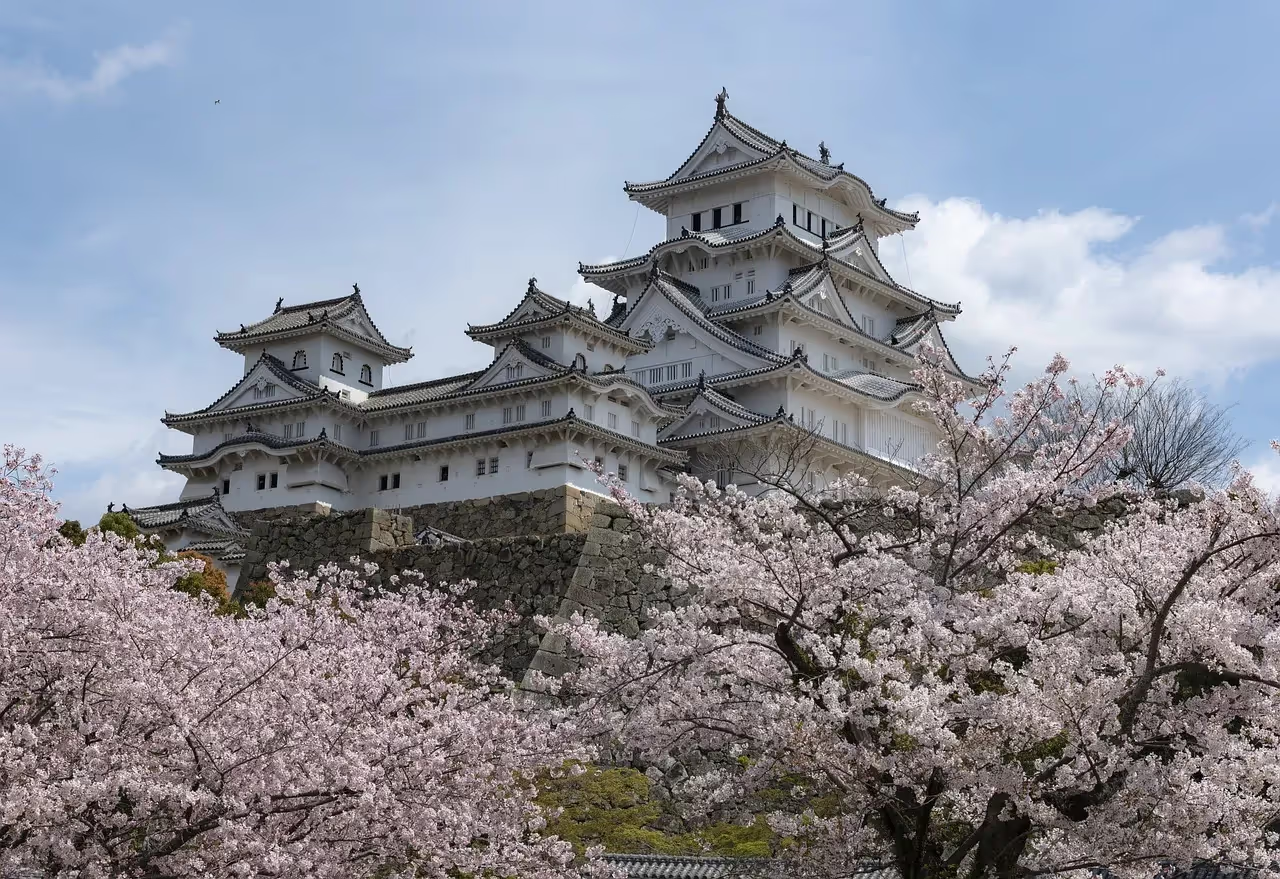
9. Matsunoo Taisha
One of the oldest shrines in Kyoto, Matsunoo Taisha is located at the foot of Mount Matsuo and is particularly famous for its connections to sake brewing. The shrine is dedicated to the god of agriculture, and visitors can enjoy peaceful walks through the surrounding garden, which features natural springs. Matsunoo Taisha is also known for its festival in late April, where local sake brewers offer their products to the shrine in gratitude.
Tip: Don’t miss the waterfall within the grounds, believed to have purifying properties, and the sake barrels dedicated to the shrine
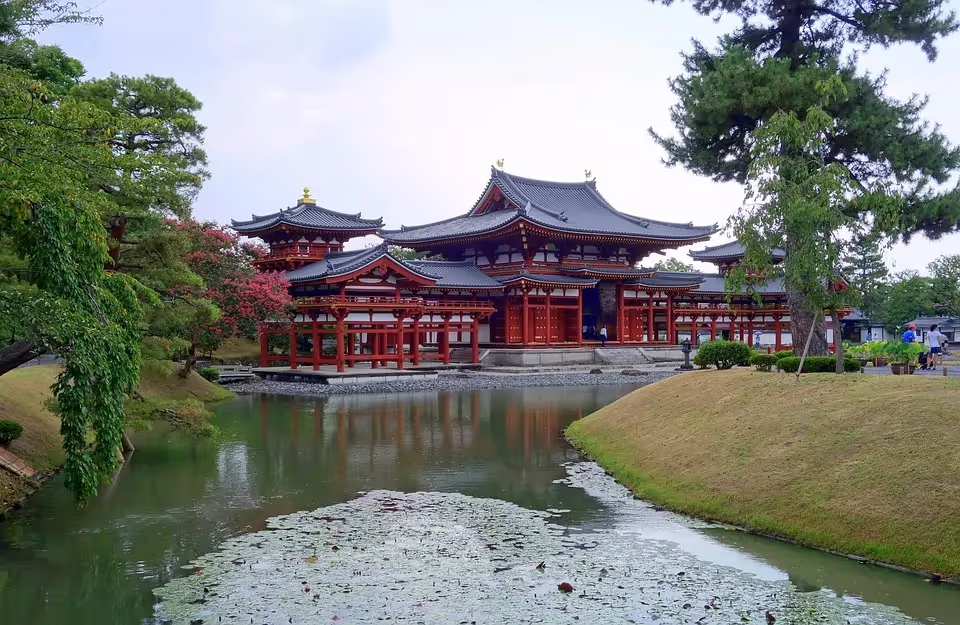
10. Ujigami Shrine
Ujigami Shrine, located in nearby Uji, is considered the oldest standing shrine in Japan, dating back to the 11th century. It’s a UNESCO World Heritage site, known for its historical significance and the serene beauty of its surroundings. The nearby Uji River and Byodo-in Temple add to the overall tranquility of the area. Ujigami Shrine is often less crowded than other major Kyoto sites, making it perfect for visitors seeking a quiet and reflective experience.
Tip: Combine your visit with a stop at one of Uji’s traditional tea houses to enjoy the region’s famous green tea.
These shrines further highlight Kyoto’s rich history, offering a deeper understanding of the city’s spiritual traditions and architectural beauty. Whether you’re exploring the city's main attractions or venturing off the beaten path, these shrines provide a peaceful and culturally enriching experience


















